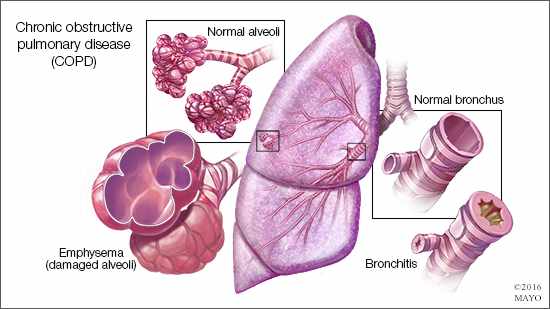-
Chronic obstructive pulmonary disease: Risks, symptoms and prevention

Chronic obstructive pulmonary disease, or COPD, is a collection of serious lung diseases that obstructs airflow from the lungs and causes breathing issues. Emphysema and chronic bronchitis are the conditions that most commonly contribute to COPD. According to the American Lung Association, more than 11 million people in the U.S. have been diagnosed with COPD, which is third leading cause of death. Understanding the risks, symptoms and effective prevention methods of COPD can help your long-term health.
“The greatest risk for developing COPD is smoking cigarettes,” says Sara Shorter, a Mayo Clinic Health System Pulmonary nurse practitioner. “Any long-term exposure to irritant gases increases chances of COPD, but cigarette use is by far the most common, especially if you’re a smoker who also has asthma.”
Shorter explains symptoms typically don’t appear until extensive lung damage has occurred. However, warning signs may include:
- Daily cough and mucus production
- Shortness of breath, especially during physical exertion
- Wheezing
- Tightness in the chest
- Blue-colored lips or fingernails
- Regular respiratory infections
- Poor energy levels
- Unexplained weight loss
- Swelling of ankles, feet or legs
“COPD patients commonly experience what are known as exacerbations, which are periods where symptoms are worse than normal for several days,” says Shorter.
Notable risk factors outside of smoking, Shorter says, are exposure to chemical fumes, dusts and vapors, which commonly occur in workplace settings, as well as exposure to fumes from burning fuel, older age and genetics.
“In order to prevent COPD and associated issues, individuals need to protect their lungs,” says Shorter. “Don’t smoke. Avoid coming into contact with chemical fumes and pollutants. And protect yourself from respiratory illnesses by making healthy lifestyle choices. “The earlier COPD is detected, the better the potential outcome. So be sure to talk with your health care team if you have signs, symptoms or concerns.”







